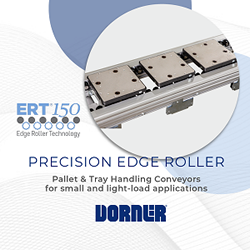100,000 Mobile Robots Shipped In 2021
Just over 100,000 mobile robots (AGVs and AMRs) were shipped globally in 2021, the first time this milestone has been reached, according to data in our latest report. The current labor shortage, coupled with strong e-commerce growth, has accelerated manufacturing and logistics companies’ plans to automate. This has caused sales in mobile robots to spiral, with nearly 70% more vehicles shipped than the year before and a 36% increase in revenues, which rose to nearly $3bn.
It is regularly claimed that robots will steal jobs from people. But in the post-COVID world we are seeing the opposite: robots are filling gaps left by widespread labor shortages. This is particularly the case in e-commerce warehouses.
AMRs surpass AGV revenues for first time
AGVs are a firmly established technology that has been around for 40+ years. But they have been challenged by AMRs for some time and, in 2021, global AMR revenues of $1.6bn finally surpassed those of AGVs by nearly $300m. In terms of shipments, almost 18,000 AGVs were shipped in 2021 compared to over 82,000 AMRs. By 2025 this will be 43,000 and 640,000 respectively.
Meanwhile, last year, Locus Robotics became the first AMR company in the world to achieve ‘unicorn’ status with a billion dollar valuation. Within the AMR sector, person-to-goods (P2G) robots have grown especially strongly. Having proved themselves as a concept, they are now moving into a major roll-out phase. One example is DHL’s recent investment in 2,000 P2G robots.
China – the big consumer of mobile robot tech
China accounted for almost 40% of the 100,000 worldwide mobile robot shipments last year. The USA came in second accounting for just over a quarter. We expect both countries to maintain those shares up to 2025, when close to 2 million robots will have been installed. The market in general has some obvious drivers, and mobile robots are most attractive in regions that feature a high labor cost, low unemployment, and high e-commerce penetration.
The UK is a good example of a country where all these factors appear to be playing out. The country saw just over 2,300 unit shipments in 2021. This is projected to rise to over 18,500 in 2025. An increase of 700%. Compare this to India, where labor is much cheaper. That country, with well over a billion in population, shipped only 566 mobile robots in 2021, this will rise to only 2,700 by 2025.
700% increase in mobile robot orders from general merchandise retailers
The mobile robot market is heavily driven by demand from logistics, particularly e-commerce. And the big growth story is in general merchandise, which includes all retailers with the exception of the apparel and grocery sectors. There were over 22,000 shipments of mobile robots to general merchandise retailers in 2021 and the only sector that came anywhere close in terms of orders was automotive manufacturing with over 15,000 units. We forecast there will be over 154,000 shipments to the general merchandise sector in 2025, an increase of 600% on 2021.
Third party logistics (3PL) firms are the other big growth story for mobile robot technology. These companies have long needed automation, yet up until recently have struggled to justify the investment given the typically short customer contract lengths they suffer from. Whilst large-scale, integrated automation solutions can cost upwards of $5m and take 7+ years to get an ROI, mobile robots can be added at a fraction of that cost and scaled up easily.
At the same time the 3PL business is booming. That’s because the pressures caused by COVID have resulted in numerous companies turning to 3PL providers to solve sudden logistical problems. Other sectors, such as apparel, will see similar, sometimes even bigger increases in percentage terms, though from lower baselines.
Comments (0)
This post does not have any comments. Be the first to leave a comment below.
Featured Product


